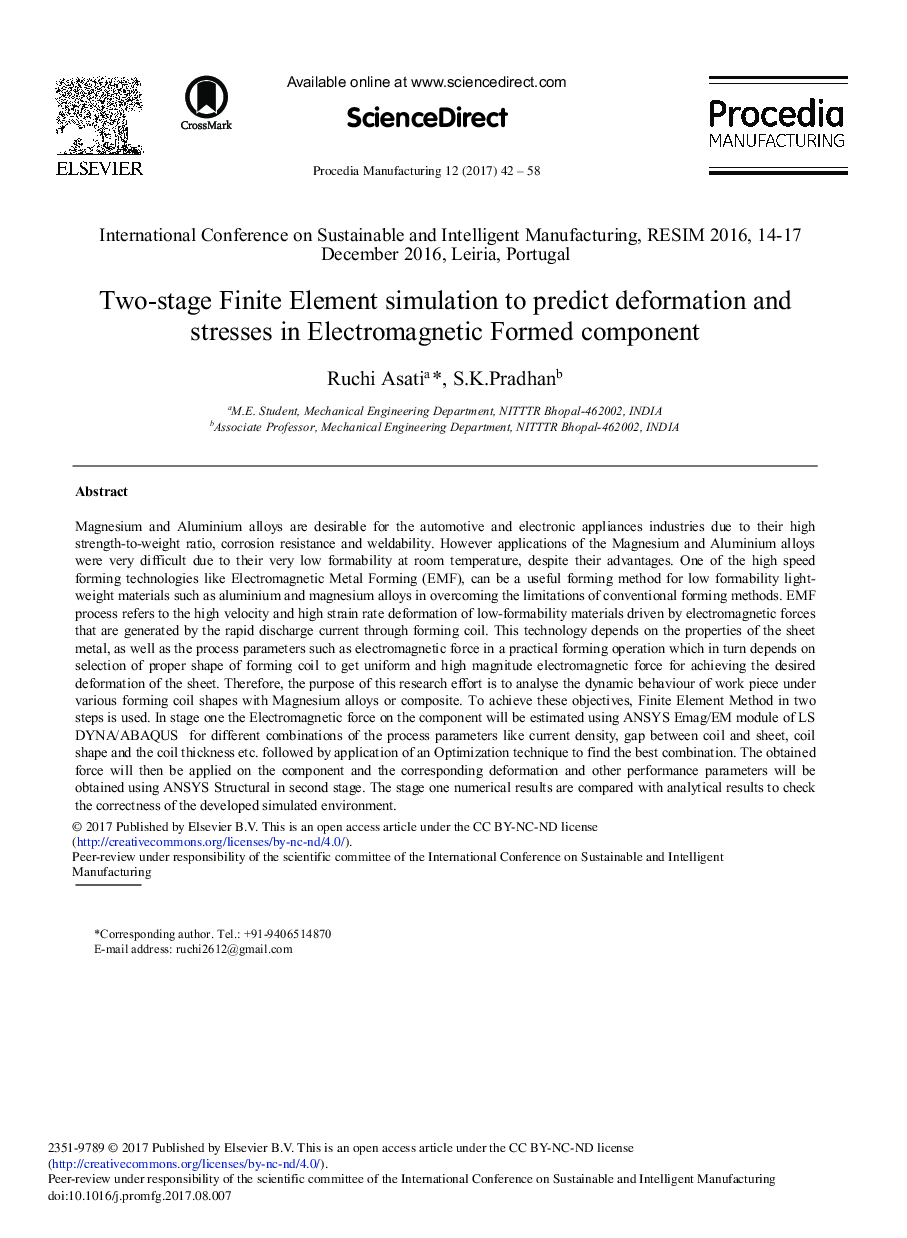| Article ID | Journal | Published Year | Pages | File Type |
|---|---|---|---|---|
| 5128610 | Procedia Manufacturing | 2017 | 17 Pages |
Magnesium and Aluminium alloys are desirable for the automotive and electronic appliances industries due to their high strength-to-weight ratio, corrosion resistance and weldability. However applications of the Magnesium and Aluminium alloys were very difficult due to their very low formability at room temperature, despite their advantages. One of the high speed forming technologies like Electromagnetic Metal Forming (EMF), can be a useful forming method for low formability light-weight materials such as aluminium and magnesium alloys in overcoming the limitations of conventional forming methods. EMF process refers to the high velocity and high strain rate deformation of low-formability materials driven by electromagnetic forces that are generated by the rapid discharge current through forming coil. This technology depends on the properties of the sheet metal, as well as the process parameters such as electromagnetic force in a practical forming operation which in turn depends on selection of proper shape of forming coil to get uniform and high magnitude electromagnetic force for achieving the desired deformation of the sheet. Therefore, the purpose of this research effort is to analyse the dynamic behaviour of work piece under various forming coil shapes with Magnesium alloys or composite. To achieve these objectives, Finite Element Method in two steps is used. In stage one the Electromagnetic force on the component will be estimated using ANSYS Emag/EM module of LS DYNA/ABAQUS for different combinations of the process parameters like current density, gap between coil and sheet, coil shape and the coil thickness etc. followed by application of an Optimization technique to find the best combination. The obtained force will then be applied on the component and the corresponding deformation and other performance parameters will be obtained using ANSYS Structural in second stage. The stage one numerical results are compared with analytical results to check the correctness of the developed simulated environment.
